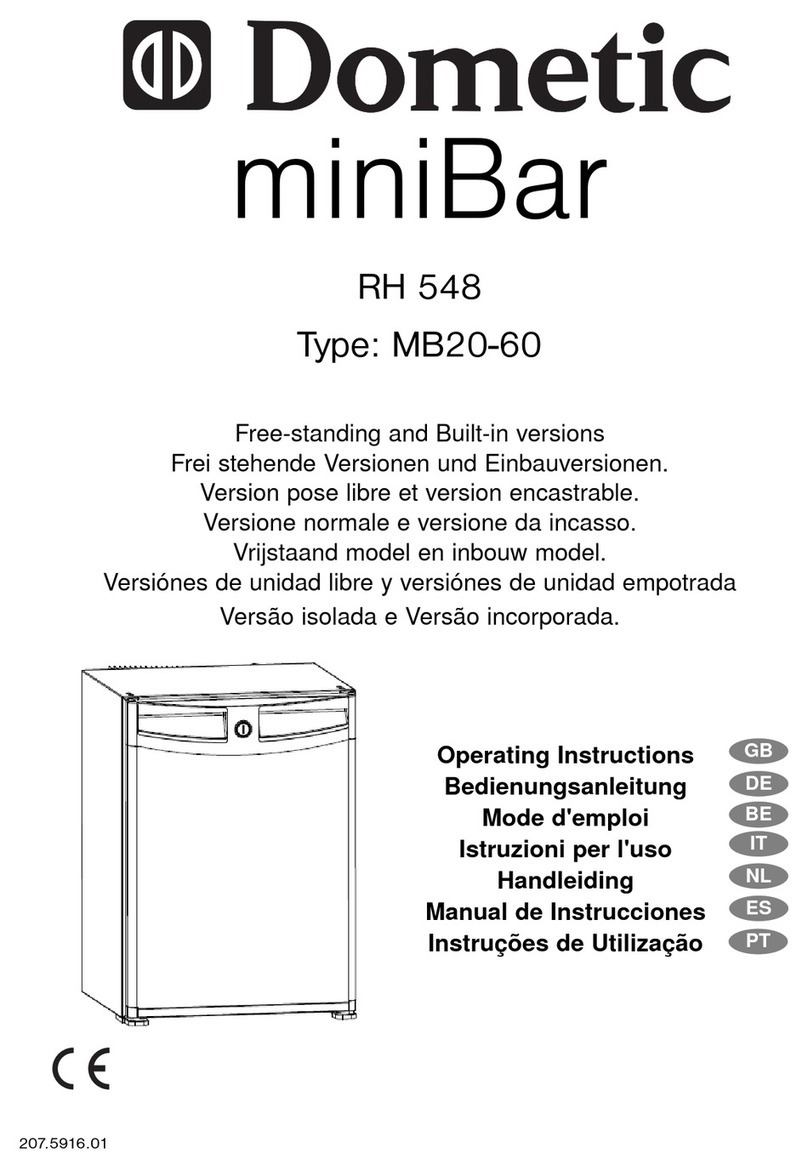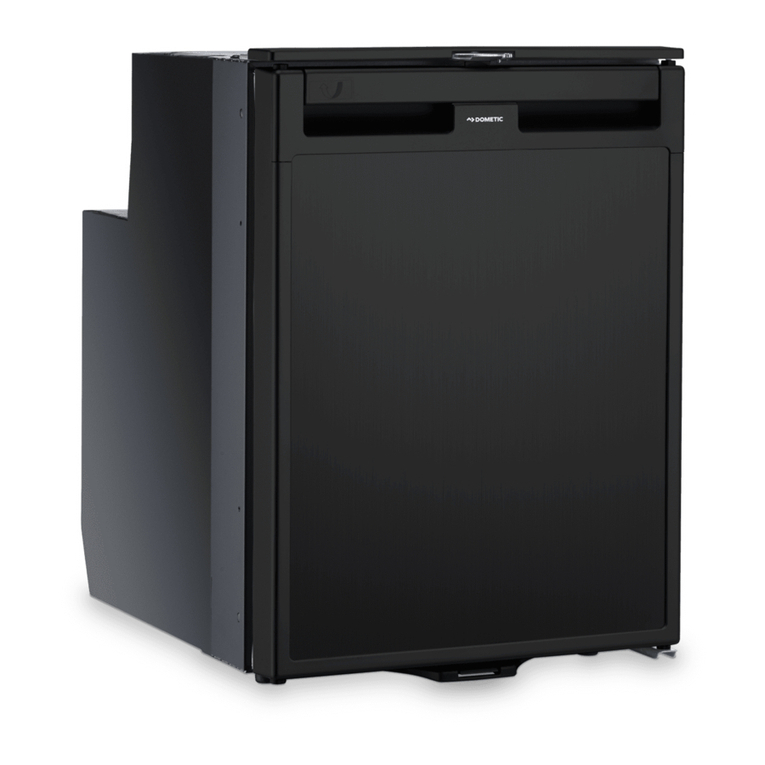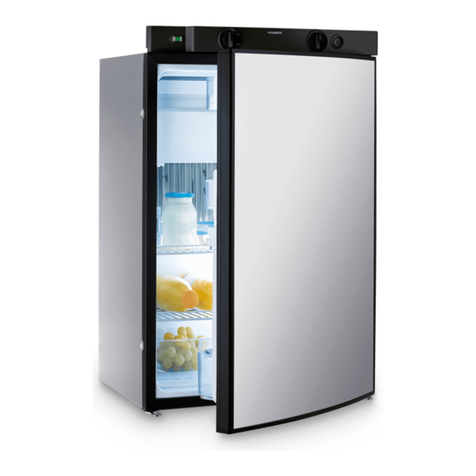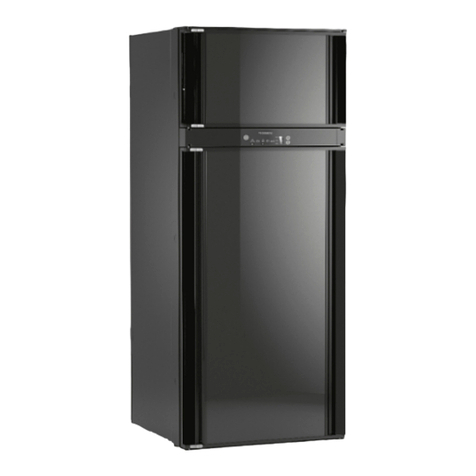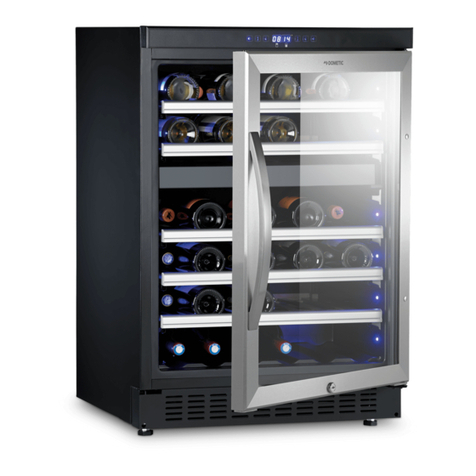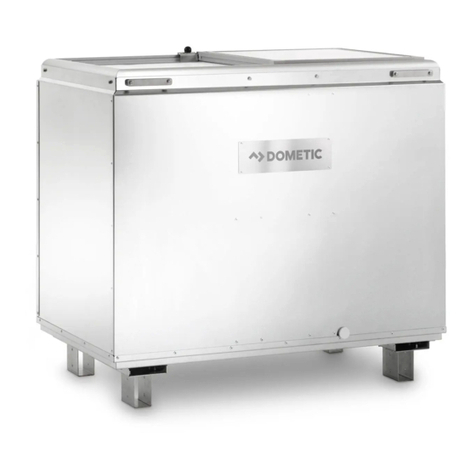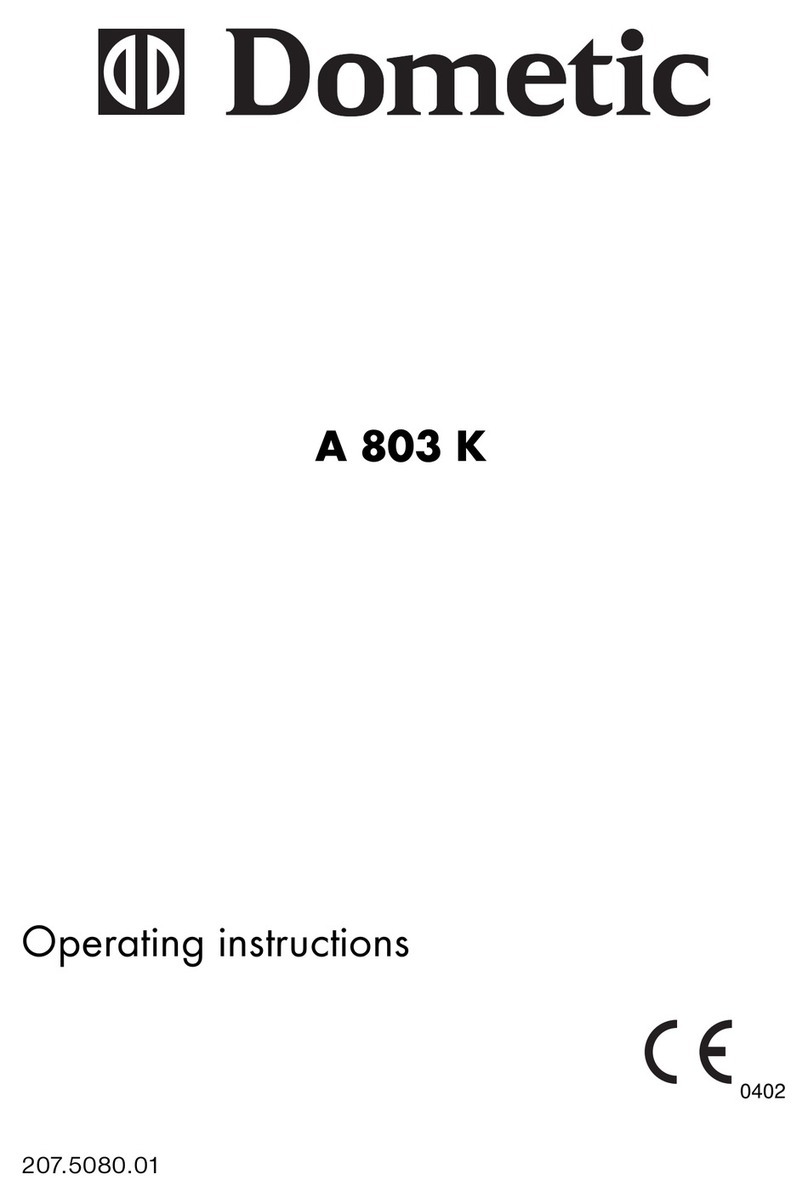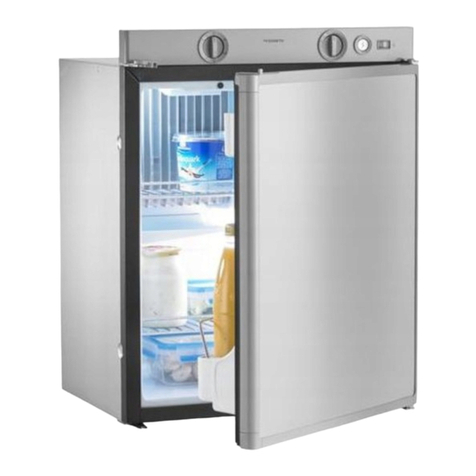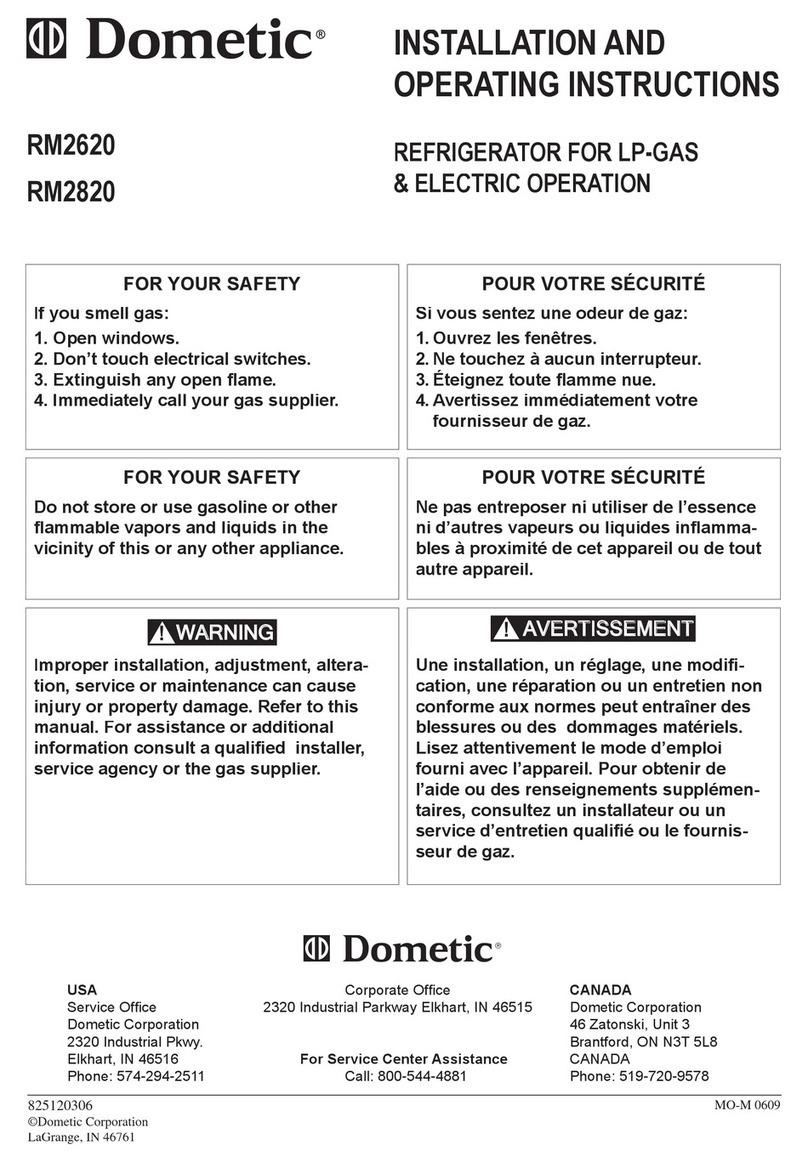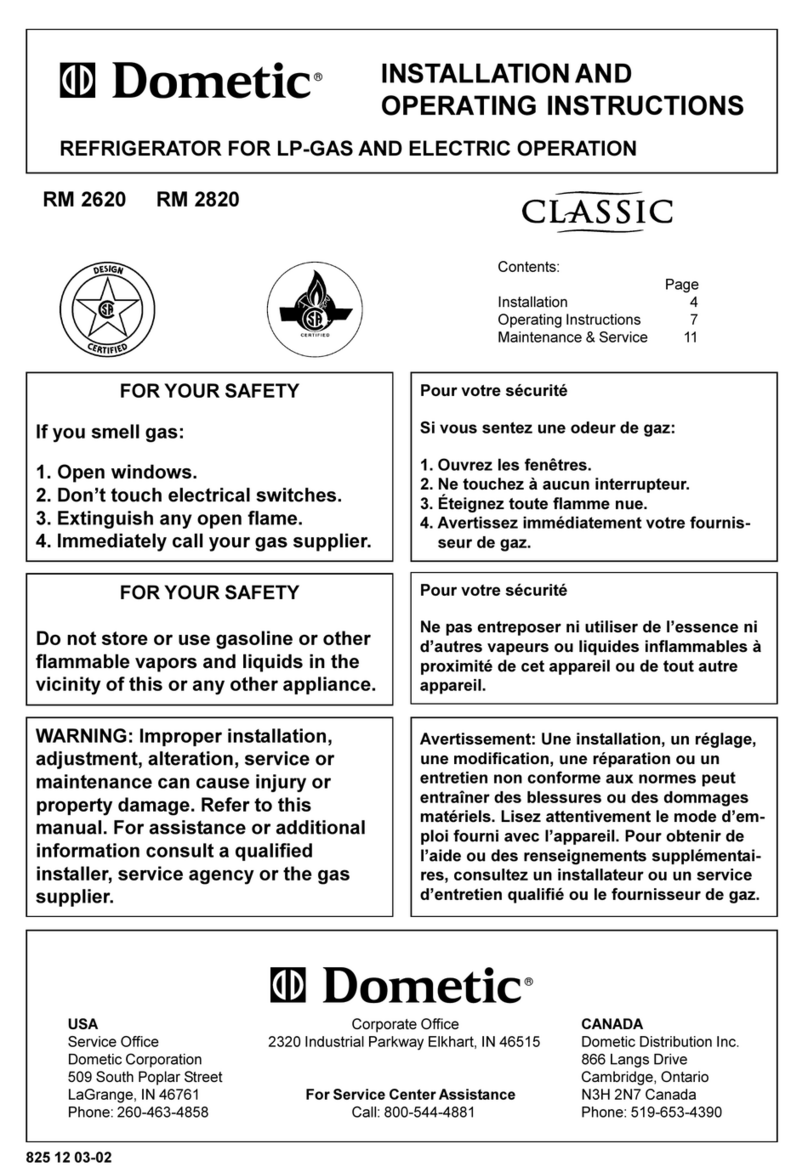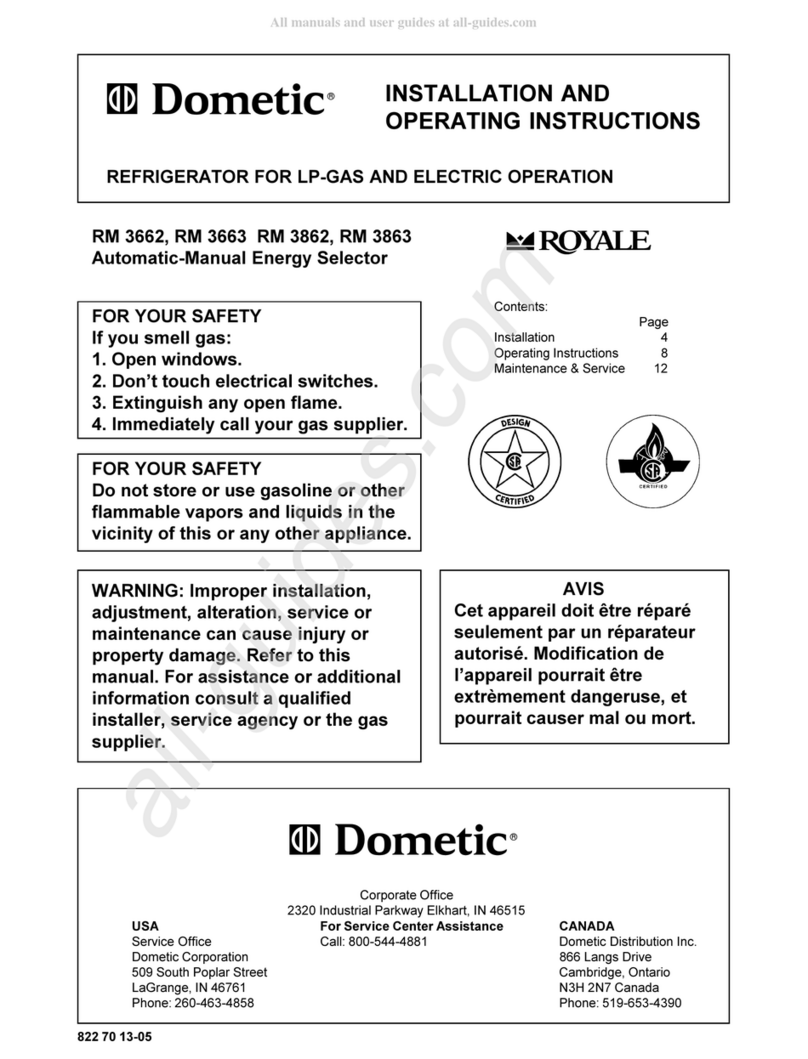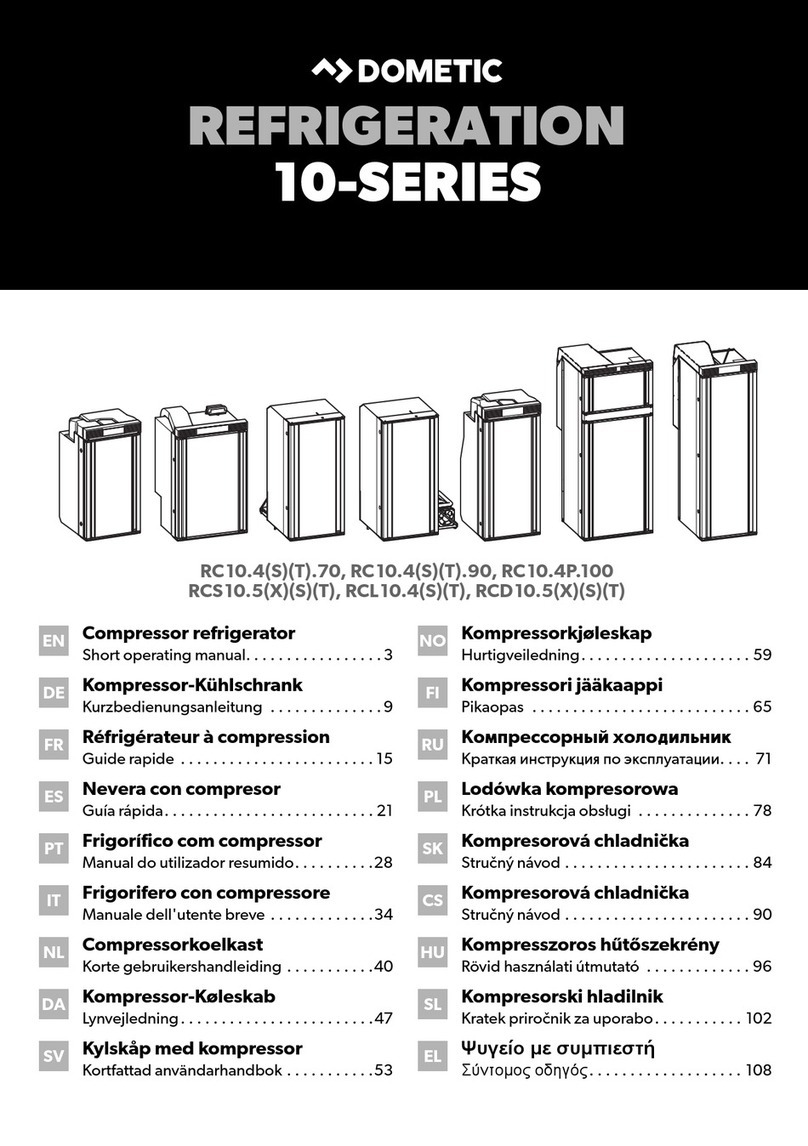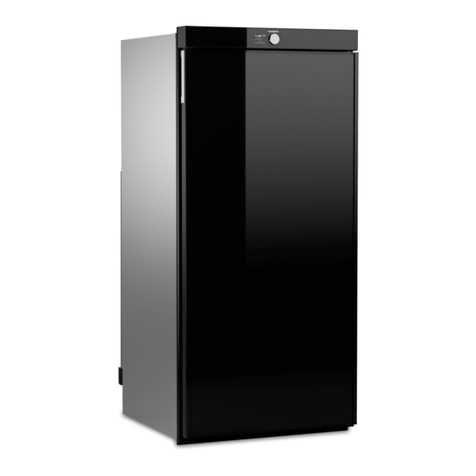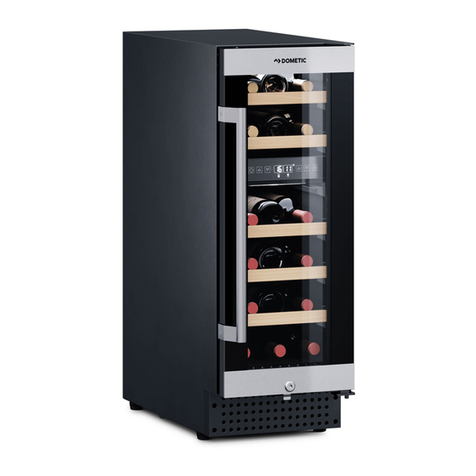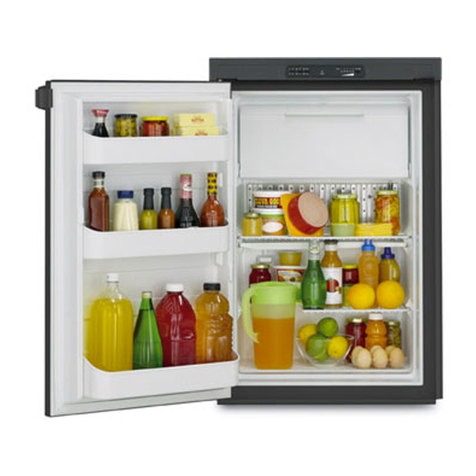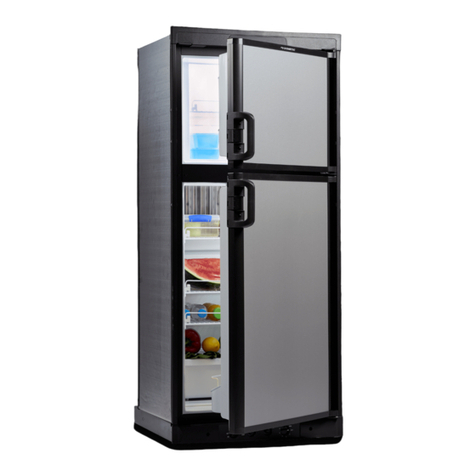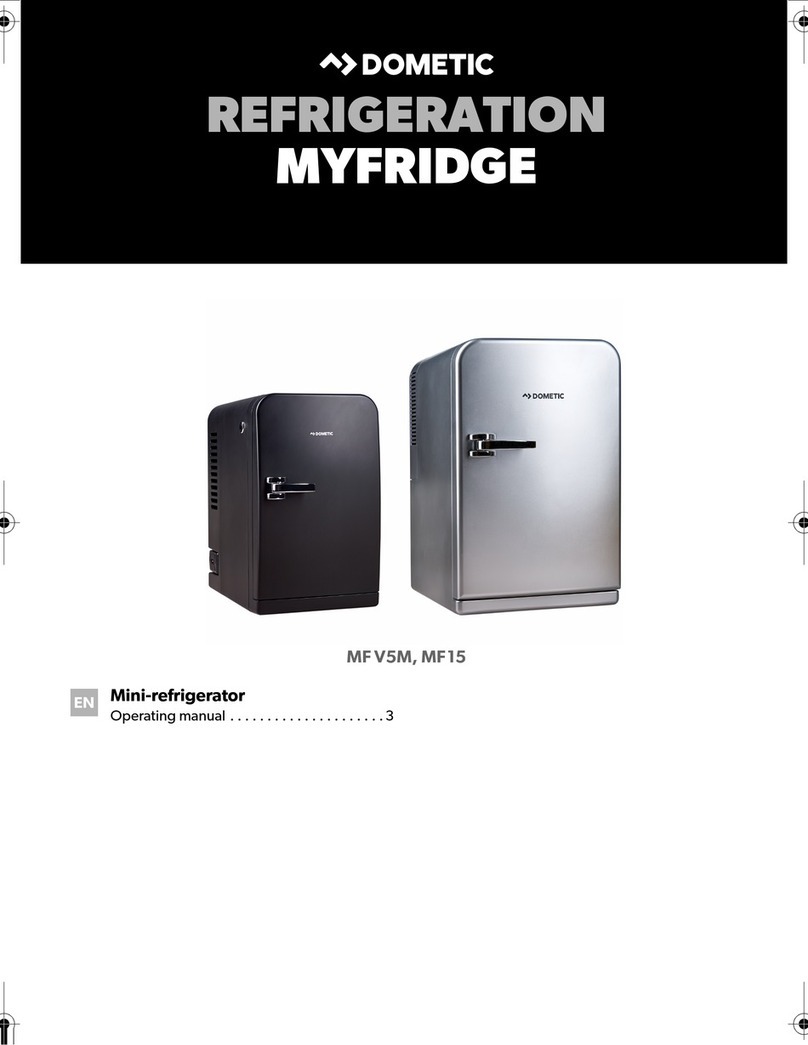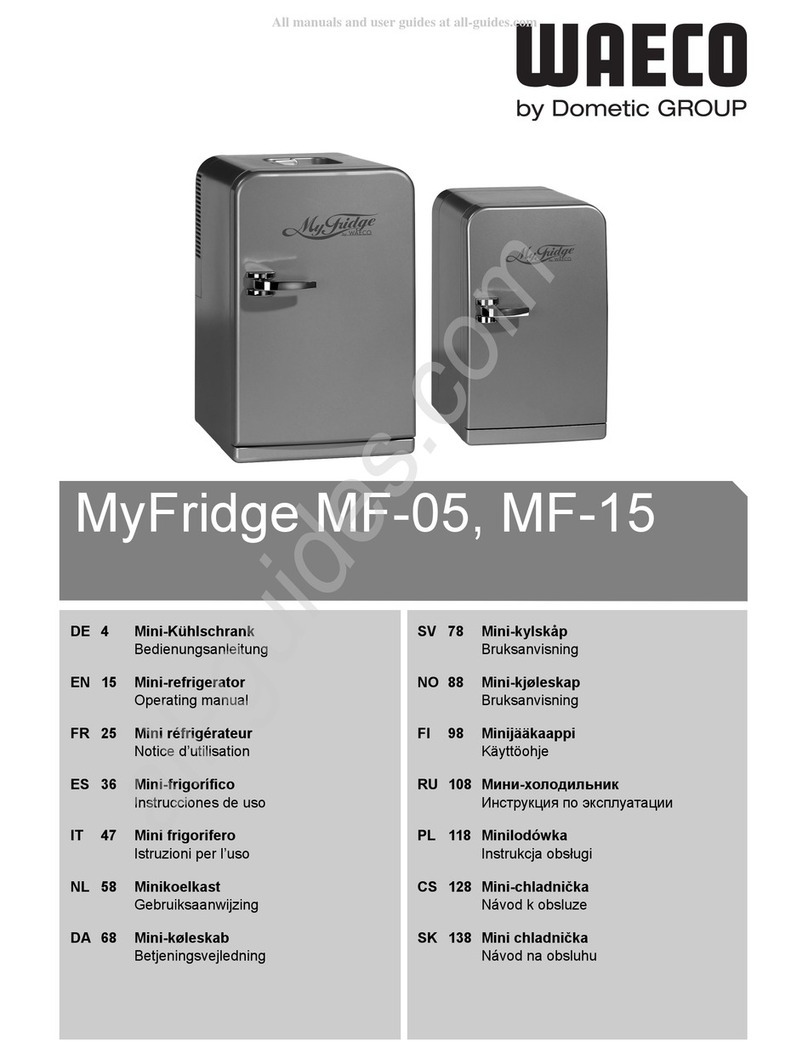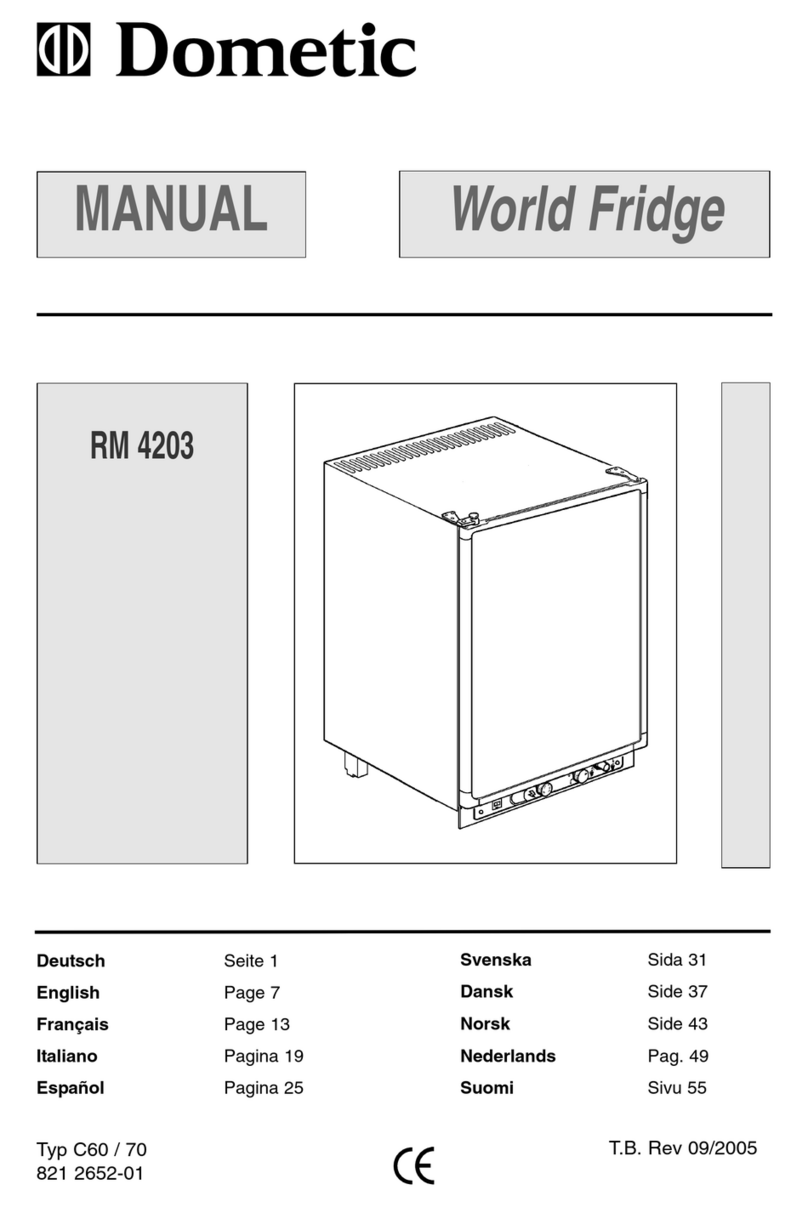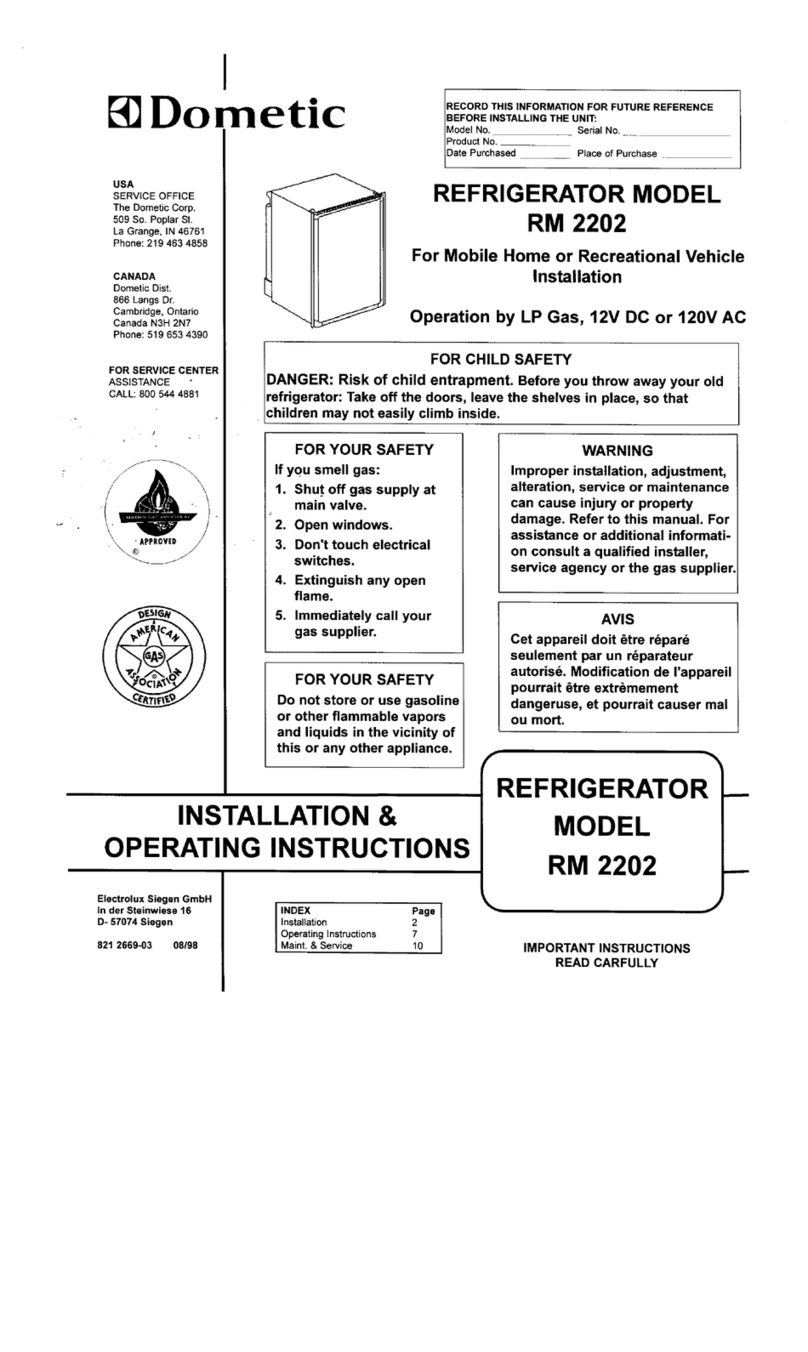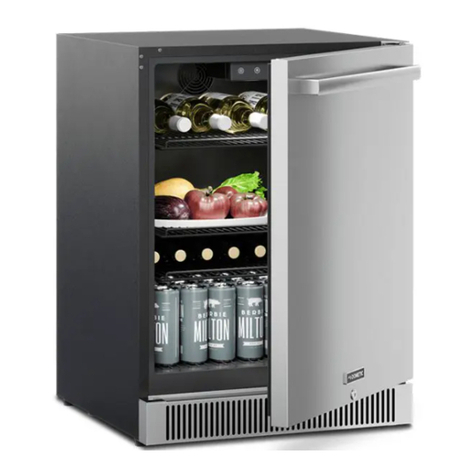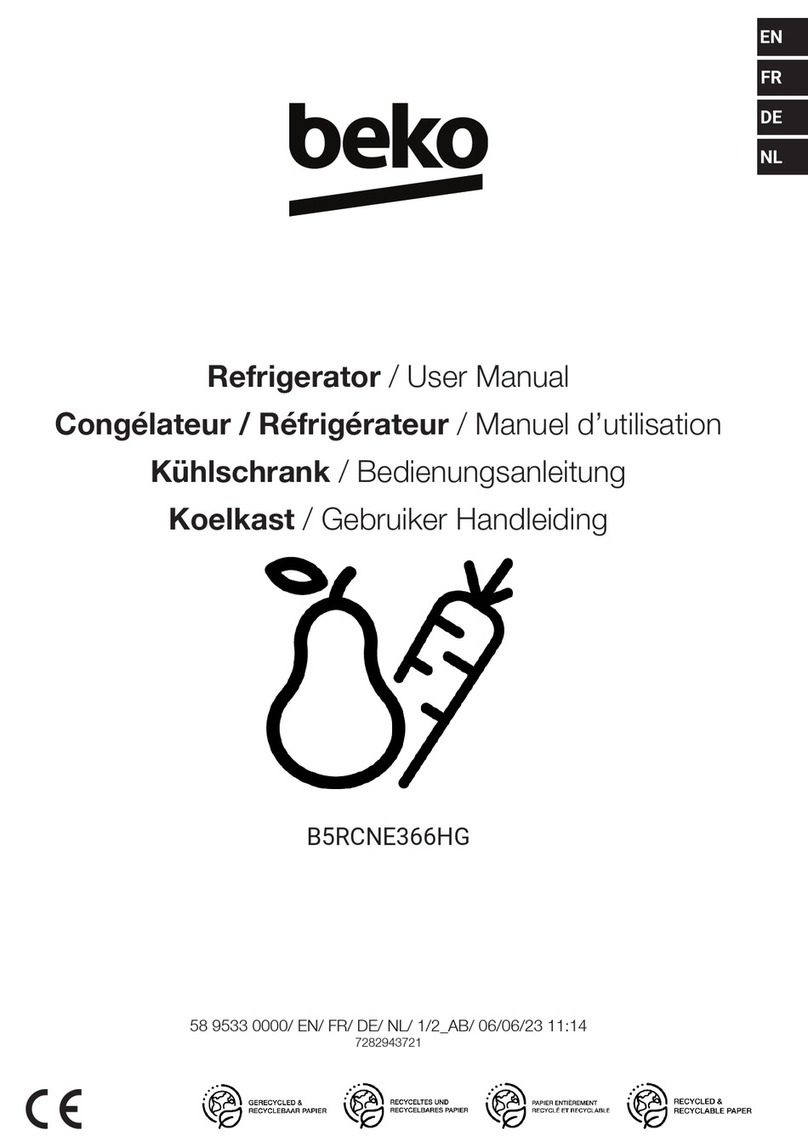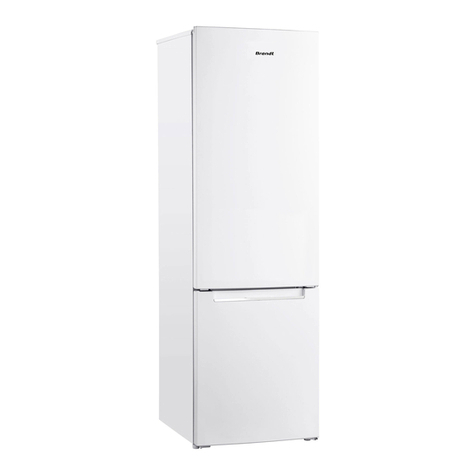
INSTALLATION
GENERAL INSTRUCTION
This appliance is designed for storage of foods
and storage of frozen foods and making ice.
The refrigerators outlined herein have been design cer-
tified by A.G.A. under the ANSI Z21.19 Refrigerator
Standardforinstallationinamobilehomeorrecreational
vehicle and are approved by the Canadian Gas Asso-
ciation.
The certifications are, however contingent on the instal-
lation being made in accordance with the following in-
structions as applicable.
In the U.S.A., the installation must conform with:
1. NationalFuelGasCodeANSIZ223.1-(latestedition)
2. Manufactured Home Construction and Safety Stan-
dard, Title 24 CFR, Part 3280.
3. Recreational Vehicles ANSI A119.2-(latest edition).
The unit must be electrically grounded in accordance
with the National Electric Code ANSI/NFPA 70-(latest
edition) when installed, if an external alternating current
electrical source is utilized.
4. Any applicable local code.
In CANADA, the installation must conform with:
1. Current CAN/CGA B149 Gas Installation Codes
2. Current CSA Standard Z240.4 GAS-EQUIPPED
RECREATIONALVEHICLESANDMOBILEHOUS-
ING.
3. Where a flexible metal connector is used, it must
comply with the provisions of the current Standard
CAN1-6.10, METAL CONNECTORS FOR GAS
APPLIANCES.
4. Any applicable local code
The unit must be electrically grounded in accordance
with the current CANADIAN ELECTRICAL CODE C22
Parts 1 and 2.
VENTILATION
The installation shall be made in such a manner as to
separate the combustion system from the living space
of the mobile home or recreationalvehicle.Openings for
air supply or for venting of combustion products shall
have a minimum dimension of not less than 1/4 inch.
Proper installation requires one lower fresh air intake
and one upper exhaust vent. The ventilation kits shown
inthisinstructionmanualhavebeencertifiedforusewith
the refrigerator models listed in the table. For "
Certified
Vent System Kits
" see page 15. The ventilation kits
must be installed and used without modification. An
opening toward the outside at floorlevel inthe refrigera-
tor compartment must be provided for ventilation of
heavier-than-airfuelgases.Thelowerventoftherecom-
mended kits is provided with proper size openings.The
flow of combustion and ventilating air must not be ob-
structed.
The lower side vent is fitted with a panel which provides
an adequate access opening for ready serviceability of
the burner and control manifold of the refrigerator.
This should be centered on the back of the refrigerator.
GAS CONNECTION
Hook-up to the gas supply line is accomplished at the
manual gas valve, which is furnished with a 3/8" SAE
(UNF 5/8" -18) male flare connection. All completed
connections should be checked for leaks with soapy
water. ! WARNING
DO NOT use a flame to check for gas leaks.
The gas supply system must incorporate a pressure
regulator to maintain a supplypressure of notmore than
11 inches water column.
When testing the gassupply system attest pressures in
excess of 1/2 psig, the refrigerator and its individual
shutoff valve must be disconnected from thegas supply
piping system.
When testing the gas supply system at pressures less
than or equalto 1/2psig, the appliancemust beisolated
from the gas supply piping systemby closingits individ-
ual manual shutoff valve.
In case detailed instructions on the installation and
connection to the gas supply are required, contact your
dealer or distributor.
ELECTRICAL CONNECTION
120 Volts AC Connection
The refrigerator is equipped with a three-prong (ground-
ing) plug for your protection against shock hazards and
should be plugged directly into a properly grounded
three-prong receptacle. DO NOT cut or remove the
grounding prong from this plug. The free length of the
cord is 2 feet and therefore recommended that the
receptacle be located to the right side of the refrigerator
(viewedfromtherear)andapproximately10inchesfrom
the floor (see FIG.3). This allows easy access through
the vent door.The cord should be routed to avoid direct
contact with the burner cover, flue cover or any other
components that could damage the cord insulation.
12 Volts DC Connection
The refrigerator model NDR 1492 require a continuous
12 volt DC supply (even though 2-way models are
designed to operate on 120 volts AC and gas, a 12 volt
FIG. 3
10"
120 Volt AC
receptacle
4
